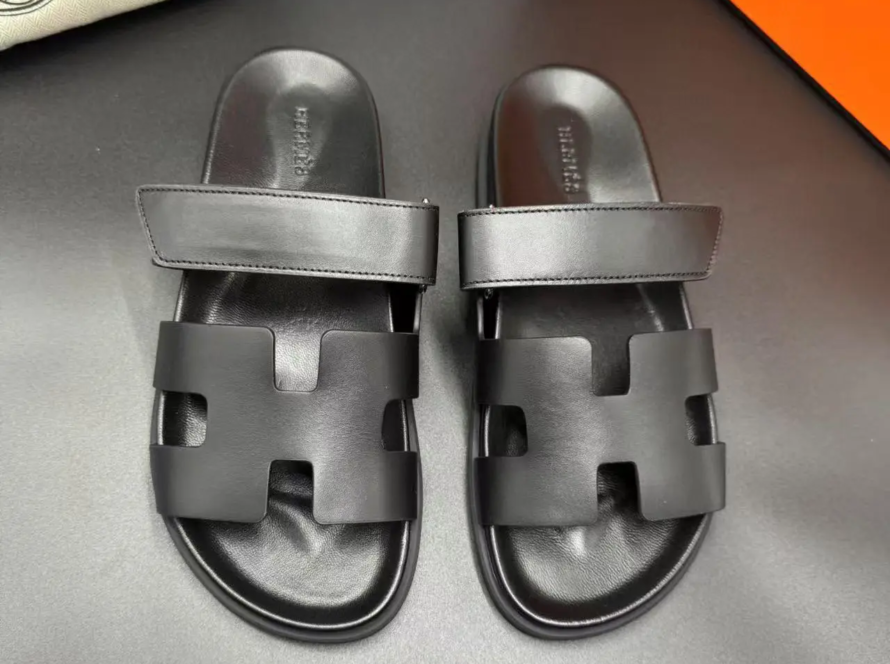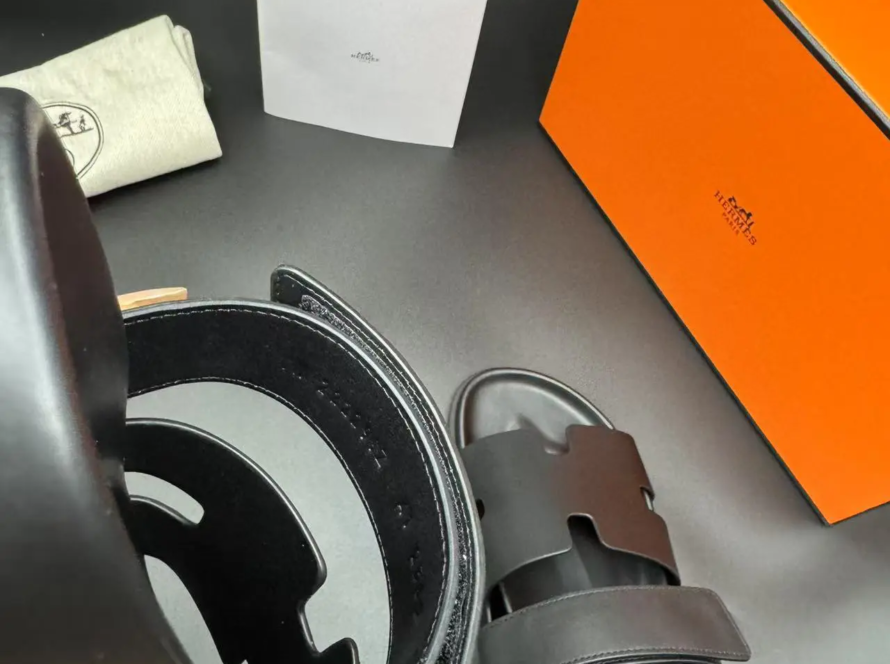There is an unspoken elegance to the stride of a finely crafted leather-soled shoe – a whisper of tradition, a refined touch favored by those who understand that true luxury lies in the details. But patina and prestige aside, leather soles are enjoying a renaissance among discerning customers for unexpected reasons: ground. As the worlds of holistic wellness and high fashion merge, the humble leather sole is becoming a bridge between ancient wisdom and modern luxury. For collectors who value both craftsmanship and well-being, or bespoke clients who seek harmony every step of the way, this is more than just a trend—it’s a reconnection with what it means to move through the world with intention.
The allure of leather: more than just timeless style
Leather soles have long been the hallmark of quality footwear, with luxury shoe manufacturers choosing leather soles not only for tradition but also for their unparalleled performance. The full-grain leather is vegetable-tanned and hand-finished to mold to the foot like a second skin, providing breathability that synthetic materials can’t replicate. Unlike rubber or thermoplastic soles that absorb heat and moisture, leather “breathes” and wicks away sweat while maintaining a stable microclimate around the foot. This natural adjustment isn’t just about comfort, it’s the first hint of leather’s deeper dialogue with the body and the earth.
For luxury goods collectors, choosing leather soles represents an appreciation for craftsmanship. Brands like John Lobb, Edward Green and Berluti take the soles of their shoes as seriously as the uppers, choosing leathers for density and durability, often with metal tacks driven in at strategic points for longevity. Yet behind this artisanal pedigree lies a scientific truth: leather is a natural conductor, capable of fostering a subtle yet profound connection with the earth—a practice now validated by emerging research.
Grounded Science: Where Luxury Meets Biology
Earthing (or “grounding”) is rooted in the simple act of making direct physical contact with the electrons on the Earth’s surface—walking barefoot on grass, soil, or sand. Peer-reviewed research shows this connection can neutralize free radicals, reduce inflammation and improve sleep by synchronizing the body’s electrical rhythms with the earth’s natural charge.
But in a world of paved streets and insulated floors, going barefoot is almost impractical—especially for those accustomed to refined elegance. This is where leather-soled shoes become a revelation. Unlike synthetic materials, which act as insulators, untreated leather is slightly porous and rich in conductive ions like potassium and sodium. When the wearer walks on natural surfaces, leather can "capacitive coupling"- Passive transfer of electrons from the earth to the body. Researchers who measured skin conductance found that leather soles allowed electron flow to levels comparable to barefoot contact, while rubber soles blocked electron flow entirely.
For well-heeled health enthusiasts, this creates a compelling proposition: elegance and Balanced, uncompromising.
Rubber vs. Leather: Grounding Differences
Luxury brands often offer rubber-soled variations of iconic leather styles, touting weather resistance and traction. But for grounding effectiveness, this difference is irreconcilable:
- eraser: A polymer designed to be insulating – its molecular structure cannot be penetrated by electrons. Wear it while hiking? The soles of your feet protect you from the elements.
- Synthetic materials (TPU, EVA): Lightweight and cushioned, but also non-conductive. Great for athletic performance, but counterproductive for grounding.
- leather: An organic matrix that maintains subtle conductivity even when stained or waxed. Full grain variant with minimal finish provides optimal electron transfer.
That’s not to say no to hybrid soles like the Dainite sole, which has rubber embedded with shallow grooves. They may offer some degree of conductivity if the wearer stands on wet grass (water enhances electron flow), but leather is still the gold standard.
Creating a grounded wardrobe: An insider’s guide
Not all leather soles are created equal. To maximize grounding benefits while retaining luxury:
- Looking for Full Grain Vegetable Tanned Leather: Chrome-tanned leather often uses synthetic chemicals that reduce conductivity. Vegetable tanning – using extracts of oak bark, mimosa or quebracho – preserves the natural structure of the leather. Brands such as Gaziano & Girling or Crockett & Jones prioritize this approach.
- Prioritize minimal finishes: A thin layer of natural beeswax is acceptable, but a thick layer of polyurethane sealant (commonly found on “weatherproof” leather soles) can create obstacles. Choose soles that are raw or lightly oiled.
- walking on natural surfaces: Grass, soil, sand, and unsealed stones transmit electrons best. Concrete (slightly conductive when unpainted) and wood floors (in homes) have secondary advantages.
- Solve thoughtfully: When soles wear out, have your shoemaker replace them with the same leather material, avoiding the use of synthetic fillers or adhesives that hinder conductivity.
The Art of Preservation: Caring for Leather Soles
A common criticism of leather soles is that they are susceptible to moisture. However, with careful care (customized with rituals familiar to the client), they will age gracefully:
- spin and rest: Allow 24-48 hours between wears to allow soles to dry completely.
- Use cedar shoe trees: Absorbs moisture and maintains shape.
- Carefully waterproof: If the weather requires, apply a spare layer of cow’s foot oil to the skin. edge—Avoid the central contact area of the sole.
- Heel and toe protection: Metal toe plate or rubber heel guard protects high-wear areas without compromising grounding.
Conclusion: Where tradition meets health
For centuries, leather soles have been the epitome of fine craftsmanship. Today, they offer something transcendent: a way to live in harmony with the earth without losing complexity. In an age where luxury is increasingly defined by holistic value—experience over luxury, longevity over novelty—leather-soled shoes sit at the intersection of tradition and wellness. They remind us that true grace is not just visible; it is Feltechoing from the ground.
For collectors who value both timeless style and good health, the message is clear: Being grounded is not a compromise. This is the ultimate luxury.
FAQ: Leather Soled Shoes and Grounding
Q1: Can leather-soled shoes be grounded on all surfaces?
A: They work best on naturally conductive surfaces such as grass, soil, and sand. While leather allows some electronic transmission over concrete or wood, paved or insulated floors (e.g., vinyl, carpet) completely prevent grounding.
Q2: Do leather soles wear faster than rubber soles?
A: Yes, they will wear out faster initially. However, high-quality leather soles can last for years with some rotation and care. Many luxury brands offer resoling services to extend the life of your shoes indefinitely.
Q3: Can I waterproof leather soles without sacrificing grounding?
A: Apply a small amount of natural oil (such as cow’s foot oil or coconut oil) to the skin edge Does not significantly impede electrical conductivity. Avoid using silicone sealants or heavy waxes on the sole contact surface.
Q4: Are all leather soles conductive the same?
Answer: No. Full-grain vegetable-tanned leather is minimally modified to provide optimal conductivity. Soles lined with bonded leather or synthetic materials will reduce effectiveness.
Q5: How long do I have to walk to experience the benefits of grounding?
A: Research shows that 30-40 minutes a day can significantly improve inflammation and mood. Even a short walk (for example, walking barefoot or wearing leather soles for 10 minutes) can have a calming effect.
Q6: Is grounding effective when it rains?
A: Water increases conductivity, making moist grass or soil ideal. Leather soles may soften when wet, so use toe guards and dry the shoes properly after wear.
Q7: Will the sock material interfere with grounding?
A: Synthetic fibers such as polyester may reduce electron transfer. Choose socks made from natural materials like cotton, bamboo or wool, or go without socks in warm weather.



